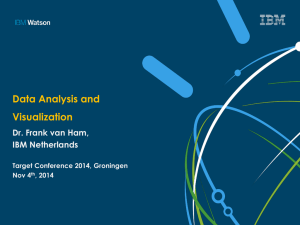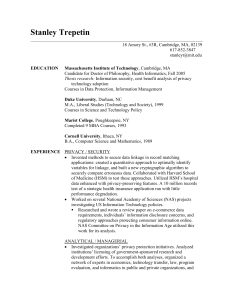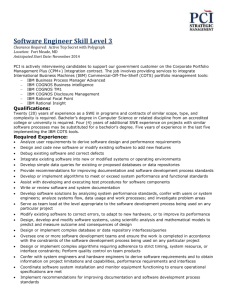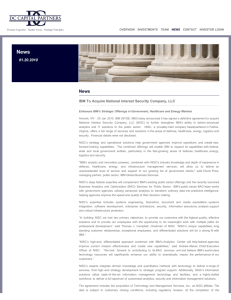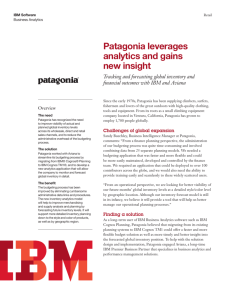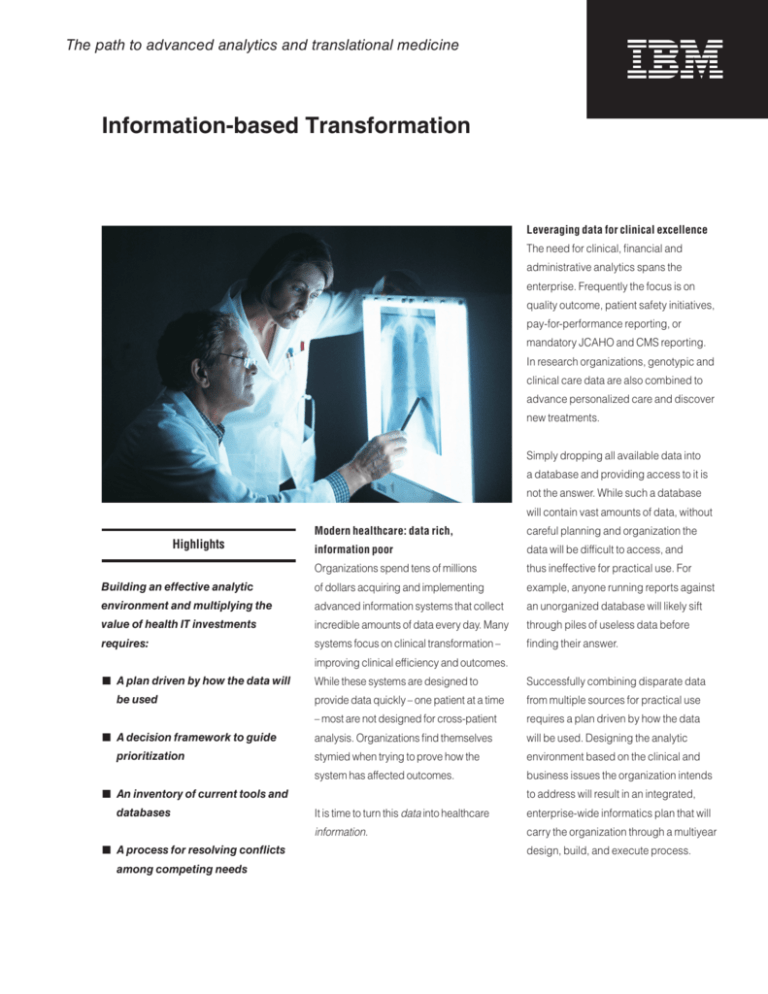
The path to advanced analytics and translational medicine
Information-based Transformation
Leveraging data for clinical excellence
The need for clinical, financial and
administrative analytics spans the
enterprise. Frequently the focus is on
quality outcome, patient safety initiatives,
pay-for-performance reporting, or
mandatory JCAHO and CMS reporting.
In research organizations, genotypic and
clinical care data are also combined to
advance personalized care and discover
new treatments.
Simply dropping all available data into
a database and providing access to it is
not the answer. While such a database
will contain vast amounts of data, without
Highlights
Modern healthcare: data rich,
careful planning and organization the
information poor
data will be difficult to access, and
Organizations spend tens of millions
thus ineffective for practical use. For
Building an effective analytic
of dollars acquiring and implementing
example, anyone running reports against
environment and multiplying the
advanced information systems that collect
an unorganized database will likely sift
value of health IT investments
incredible amounts of data every day. Many
through piles of useless data before
requires:
systems focus on clinical transformation –
finding their answer.
improving clinical efficiency and outcomes.
A plan driven by how the data will
be used
A decision framework to guide
prioritization
While these systems are designed to
Successfully combining disparate data
provide data quickly – one patient at a time
from multiple sources for practical use
– most are not designed for cross-patient
requires a plan driven by how the data
analysis. Organizations find themselves
will be used. Designing the analytic
stymied when trying to prove how the
environment based on the clinical and
system has affected outcomes.
business issues the organization intends
An inventory of current tools and
databases
A process for resolving conflicts
among competing needs
to address will result in an integrated,
It is time to turn this data into healthcare
enterprise-wide informatics plan that will
information.
carry the organization through a multiyear
design, build, and execute process.
For best results, a knowledge management
uncommon for the full build out to take five
program should be in place before focus-
years, with proper planning, “first productive
ing on the technology. This should include
use” should occur within 12 to 18 months.
processes for discussing the inevitable
conflicts, and for prioritizing any modifica-
Healthcare is not static. As new conditions
tions required by new information needs
arise and needs change, your informatics
and data sources. Because not all needs
© Copyright IBM Corporation 2007
roadmap must be adaptable. The decision
IBM Information Technology Services
Route 100
Somers, NY 10589
U.S.A.
can be met simultaneously, a successful
framework can be used to “course correct”
data model requires careful examination of
within the construct of your original objec-
issues such as governance structure and
tives as changes need to be made– knowing
06-07
specifically what you are changing, why, and
All Rights Reserved
the data management process.
what effect it will have on your overall plan.
Once a knowledge management process
is in place, the organization should
About the IBM Health Analytics Roadmap
inventory its current data analytic tools
The IBM Health Analytics Roadmap
and databases so that existing tools can
methodology helps healthcare
names may be trademarks or service
marks of others.
an analytic environment to support
framework must be defined to guide
effort is a pragmatic approach focused
current and future prioritization. This
on building a collaborative, effective
framework should:
decision-making process which results in
• Be composed of “principles” describing the
a detailed, executable plan supported by
stakeholders from across the organization.
pertaining to health analytics
It leverages IBM’s deep experience in
objectives of the organization
• Indicate how the organization will address
References in this publication to IBM products
or services do not imply that IBM intends to make
them available in all countries in which IBM
operates.
needs and aspirations of the organization as
• Reflect the clinical and business goals and
United States, other countries or both.
multi-year plan for defining and building
delivery and operational efficiency. This
Business Machines Corporation in the
Other company, product and service
enterprise analytics environment.
Through this planning stage, a decision
or registered trademarks of International
organizations rapidly define an actionable,
translational research, clinical care
IBM and the IBM logo are trademarks
be leveraged when building the new
Decision framework
Printed in the United States of America
business intelligence within healthcare
and other industries in order to speed time
to solution.
standards
• Describe how a balance will be maintained
For more information
between clinical care delivery efficiency and
To learn more about IBM Healthlink
data needs for research
Solutions Implementation Services,
contact your IBM representative or visit:
Armed with a decision framework, an
ibm.com/bcs/healthcare
inventory of current capabilities, and a
consensus of priorities, the organization
IBM Healthcare Solutions are enhanced
can determine the necessary plan or
by the clinical and business process
“roadmap” to follow during the design, build
expertise of Healthlink Incorporated,
and execute process. This provides an
which was acquired by IBM in 2005.
orderly analytic environment appropriate to
the goals of the organization. While it is not
HLS00311-USEN-00

